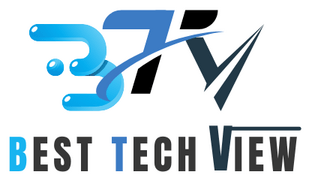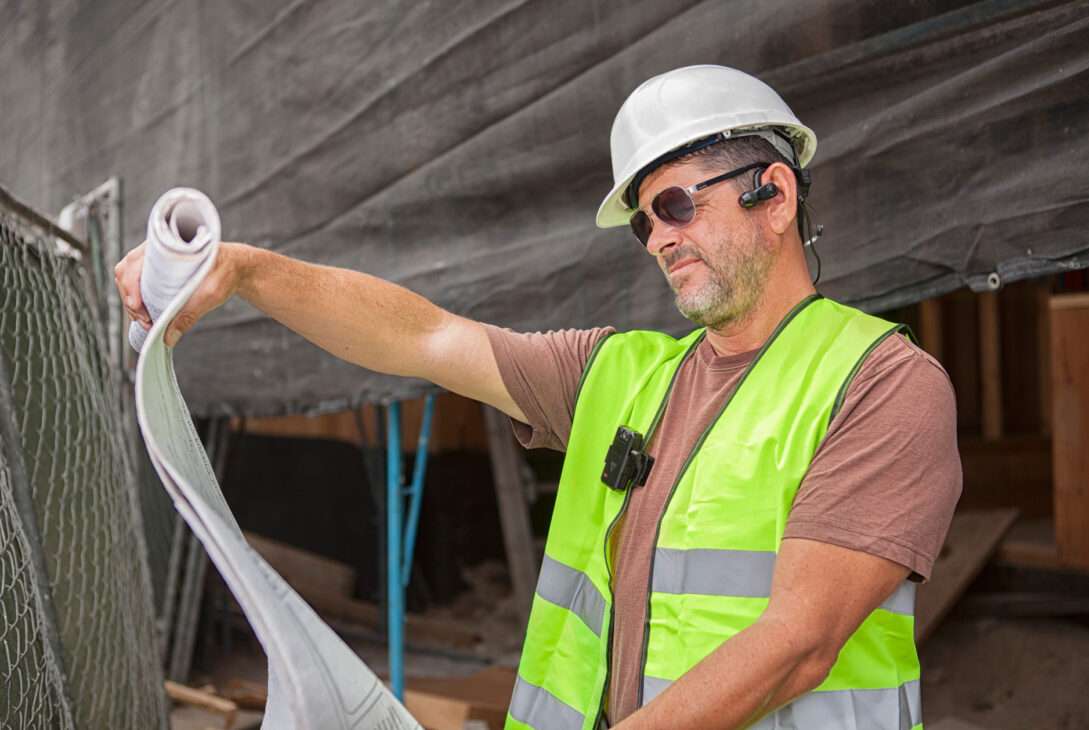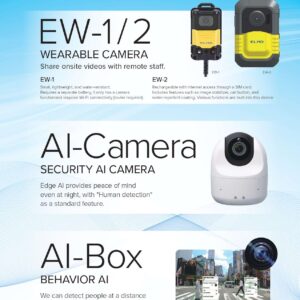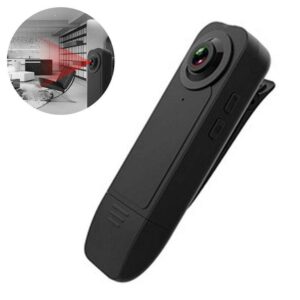Wearable Cameras for Construction are revolutionizing how job sites are monitored, managed, and made safer. But are these compact gadgets just a trend, or are they truly transforming the construction industry?
With real-time visibility, hands-free recording, and data-driven site analysis, the rise of body-worn tech is hard to ignore. So, what’s driving this shift from traditional methods to high-tech wearable solutions?
Wearable cameras help construction teams capture live site conditions, improve worker accountability, and streamline inspections. Devices like the GoPro Hero12 and RealWear Navigator™ 520 are leading the pack, offering high-res footage, voice control, and rugged durability. Experts like OSHA and construction tech consultants like JBKnowledge have recognized these tools for boosting site transparency and enhancing safety protocols.
But the story doesn’t end with a few big-name gadgets. From smart glasses to helmet-mounted cams, this space is full of innovation. So, let’s dive deeper and explore how wearable cameras are reshaping the construction world, one site at a time.

Credit: www.amazon.com
Introduction To Wearable Cameras
Wearable cameras are changing the construction industry. These compact devices provide real-time video and photo documentation. This technology helps in improving site safety and productivity.
History And Evolution
The journey of wearable cameras began with basic photographic equipment. Initially, they were bulky and difficult to use. Over time, technology has advanced significantly. Cameras became smaller and more efficient. Early models were first used by extreme sports enthusiasts.
Modern wearable cameras are lightweight and durable. They offer high-definition video and audio recording. These devices now include features such as live streaming and cloud storage. Their evolution has made them essential tools in various industries, including construction.
Importance In Modern Construction
Wearable cameras play a crucial role in modern construction. They enhance safety and help in monitoring site activities. Workers can document their tasks and share updates in real-time. This reduces the chances of errors and miscommunication.
Supervisors can review footage to ensure compliance with safety protocols. Wearable cameras also aid in training new employees. They provide visual examples of best practices and potential hazards. This technology leads to a more efficient and safer work environment.
Here are some key benefits of wearable cameras in construction:
- Real-time Monitoring: Supervisors can watch live footage from the site.
- Safety Compliance: Ensures workers follow safety protocols.
- Training: Provides visual aids for training new workers.
- Documentation: Records progress and incidents accurately.
- Improved Communication: Reduces misunderstandings between team members.
| Feature | Benefit |
|---|---|
| Live Streaming | Allows remote monitoring |
| High-Definition Recording | Ensures clear documentation |
| Cloud Storage | Easy access to footage |
| Durability | Withstands tough environments |
| Lightweight Design | Comfortable for long use |

Credit: www.researchgate.net
Enhanced Safety Measures
Wearable cameras for construction sites offer enhanced safety measures. These cameras boost worker safety and site security. They capture real-time data and document incidents effectively.
Real-time Monitoring
Real-time monitoring is vital on construction sites. Wearable cameras provide live footage. Supervisors can watch the footage instantly. This helps in quick decision-making. It ensures immediate action in emergencies.
Real-time monitoring offers several benefits:
- Instant hazard detection
- Quick response to accidents
- Continuous supervision of remote areas
Wearable cameras can stream footage to mobile devices. This allows managers to stay informed from anywhere. It enhances overall site safety and productivity.
Incident Documentation
Incident documentation is crucial for construction safety. Wearable cameras record every detail of an incident. This footage serves as reliable evidence. It helps in understanding the cause of accidents.
Key benefits of incident documentation include:
- Accurate reporting of incidents
- Improved safety protocols
- Reduced liability issues
Stored footage can be reviewed later. It helps in training sessions for workers. Learning from past incidents improves future safety measures.
Wearable cameras for construction provide enhanced safety measures. They ensure real-time monitoring and effective incident documentation. These features make construction sites safer and more efficient.
Boosting Efficiency
Wearable cameras are changing how construction sites operate. They offer a new level of efficiency. These devices help workers complete tasks faster and more safely. This section explores how wearable cameras improve construction efficiency.
Streamlining Workflow
Wearable cameras record work as it happens. This footage helps managers see job progress. It eliminates the need for frequent site visits. Managers can watch the footage and give instant feedback. This saves both time and resources.
The recorded videos also serve as training material. New workers can learn by watching experienced workers. This reduces training time and improves skill levels quickly.
| Before | After |
|---|---|
| Frequent site visits | Remote monitoring |
| Long training sessions | Video-based training |
Improving Communication
Wearable cameras improve communication among team members. Workers can share real-time video updates with their teams. This ensures everyone is on the same page. It also helps in solving issues faster.
For example, a worker can show a problem through the camera. The team can then discuss and find a solution immediately. This reduces downtime and keeps the project on track.
- Real-time video updates
- Immediate problem-solving
- Better team coordination
Key Features Of Wearable Cameras
Wearable cameras are transforming the construction industry. They offer unique features that enhance project management and worker safety. In this section, we will explore the key features of wearable cameras.
Durability And Design
Construction sites are harsh environments. Wearable cameras must withstand dust, moisture, and impact. High-quality cameras feature rugged designs. They often come with shockproof and waterproof capabilities.
| Feature | Benefit |
|---|---|
| Shockproof | Protects from accidental drops |
| Waterproof | Operates in wet conditions |
| Dustproof | Prevents malfunction due to dust |
The design should be ergonomic. Workers wear these cameras for long hours. Lightweight and comfortable designs are ideal. Adjustable straps and mounts enhance usability.
Technological Capabilities
Modern wearable cameras come with advanced technology. They offer high-resolution video and image capture. Some models include 4K video recording. This ensures crystal-clear footage.
Wireless connectivity is another critical feature. Wi-Fi and Bluetooth enable seamless data transfer. Live streaming capabilities allow real-time monitoring. This is vital for remote project management.
- High-resolution video
- 4K recording
- Wi-Fi and Bluetooth
- Live streaming
Battery life is crucial in construction settings. Look for cameras with long-lasting batteries. Some models offer up to 12 hours of continuous recording. Fast charging features are also beneficial.
Voice control and gesture recognition enhance usability. Workers can operate the camera hands-free. This is especially useful in hazardous conditions.
- Long battery life
- Fast charging
- Voice control
- Gesture recognition
Case Studies
Wearable cameras are transforming the construction industry. This section explores real-world applications. We delve into success stories and lessons learned. These case studies highlight the benefits and challenges of wearable cameras on construction sites.
Successful Implementations
Several construction companies have successfully integrated wearable cameras. These cameras improve safety and efficiency.
- Skanska USA: Reported a 35% drop in safety incidents after adopting wearable cameras (GoPro Hero10 and Trimble SiteVision) across several U.S. projects to enhance site supervision and real-time hazard identification.
- Bechtel Corporation: Improved project delivery timelines by 18% by using RealWear HMT-1 headsets, allowing remote experts to guide on-site teams during inspections and issue resolutions.
- Turner Construction Company: Leveraged wearable cameras to enhance onboarding and safety training, reducing training time for new workers by 22% by using recorded real-life site footage.
- Balfour Beatty (UK & US): Utilized body-worn cameras from Reveal Media for documentation and workforce accountability, leading to a measurable reduction in site disputes and insurance claims.
- Clark Construction Group: Employed AI-integrated wearable solutions from OpenSpace.ai, enabling automated photo documentation and progress tracking, which improved reporting accuracy and client transparency.
These examples demonstrate the potential for wearable cameras to revolutionize construction operations.
Lessons Learned
Adopting wearable cameras presents challenges. Here are some lessons from early adopters.
- Worker Privacy: Companies must develop clear policies on camera usage to protect workers’ rights and comply with privacy laws (such as GDPR or CCPA).
- Data Management: Large volumes of video require robust storage solutions and cloud platforms. Firms like OpenSpace and Trimble offer AI-powered tools to simplify tagging, storing, and retrieving footage.
- Battery Life: Ensuring that cameras last full shifts, especially in remote sites, requires choosing models with extended battery life or hot-swappable batteries, like the GoPro MAX or RealWear Navigator 520.
- Training and Adoption: Introducing new technology involves a learning curve. Companies have found success by providing role-specific training and designating tech champions on each crew.
- Connectivity Issues: Some sites lack reliable internet access, which can hinder real-time streaming. Solutions include edge computing and LTE-enabled devices to ensure continuous data capture.
- Union and Worker Relations: In unionized environments, wearable cameras must be negotiated with worker representatives to avoid backlash and build trust.
These lessons provide valuable insights for future implementations. By understanding these challenges, companies can better prepare for successful integration.

Credit: www.sciencedirect.com
Challenges And Solutions
Wearable cameras are transforming construction sites. They offer real-time insights and boost safety. But these devices come with challenges. Let’s explore these hurdles and their solutions.
Privacy Concerns
Privacy is a major issue with wearable cameras. Workers may feel monitored constantly. This can create distrust and reduce morale.
Solution: Clear policies and open communication are key. Inform workers about camera usage. Ensure they know how footage will be used. Respect their privacy during breaks and personal time.
Another solution is data encryption. Encrypt all recorded footage. This protects sensitive information from unauthorized access.
Technical Limitations
Technical issues can hinder the effectiveness of wearable cameras. Common problems include short battery life and limited storage.
Solution: Invest in high-quality cameras with better battery life. Use cameras with swappable batteries. This ensures continuous recording without downtime.
For storage issues, consider cloud storage. This offers more space and easy access to footage. Ensure a strong internet connection for seamless data transfer.
| Challenge | Solution |
|---|---|
| Privacy Concerns | Clear policies, open communication, data encryption |
| Technical Limitations | High-quality cameras, cloud storage |
Addressing these challenges can make wearable cameras more effective in construction. It improves safety and boosts productivity.
Future Trends
The construction industry is embracing wearable cameras to boost productivity and safety. Future trends promise exciting innovations, transforming how construction projects are managed and executed.
AI Integration
Wearable cameras now come with AI integration, revolutionizing construction site monitoring. AI can analyze footage in real-time, identifying potential safety hazards.
AI-driven cameras can recognize patterns and alert workers to dangers. This helps in preventing accidents and ensuring compliance with safety regulations.
Another benefit is task automation. AI can track progress and provide insights on project timelines. This makes project management more efficient and accurate.
Market Growth
The market for wearable cameras in construction is rapidly growing. A significant increase in demand is expected over the next few years.
Table below shows projected market growth:
| Year | Market Size (in Billion USD) |
|---|---|
| 2023 | 1.2 |
| 2024 | 1.5 |
| 2025 | 1.8 |
| 2026 | 2.1 |
This growth is driven by the need for enhanced safety and efficiency. Wearable cameras provide valuable data and improve communication on construction sites. As technology advances, these cameras will become even more integral to construction operations.
Frequently Asked Questions
What Are The Wearable Devices Used In Construction Industry?
Wearable devices in construction include smart helmets, AR glasses, safety vests, smartwatches, and exoskeletons. These enhance safety and efficiency.
What Is The Camera Used In a Construction Site?
Construction sites commonly use high-resolution, weatherproof security cameras. Popular options include PTZ cameras, bullet cameras, and 360-degree cameras for comprehensive monitoring.
Do Construction Sites Have Security Cameras?
Yes, many construction sites use security cameras. They help deter theft, monitor activities, and ensure safety.
Why Do Construction Workers Use Cameras?
Construction workers use cameras to monitor progress, ensure safety, document work, and prevent theft or vandalism on-site.
Conclusion
Wearable cameras revolutionize construction site monitoring, boosting safety and efficiency. These devices offer real-time insights and documentation. They empower teams to make data-driven decisions, improving project outcomes.
Embrace wearable cameras to stay ahead in the construction industry. Enhance your site’s productivity, safety, and compliance with this innovative technology

A passionate tech blogger and the founder of Best Tech View, a dynamic platform dedicated to all things technology. With a keen interest in the tech, Ahmad strives to provide insightful and engaging content on the latest tech trends, and breakthroughs.



